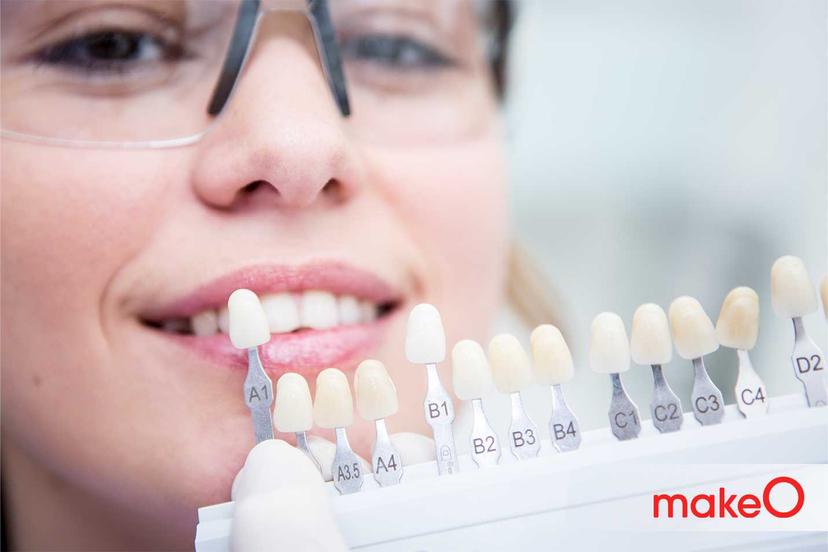MakeO blog
Have you ever imagined that the journey to a dazzling smile with perfectly aligned teeth might encounter some road bumps? If you're considering orthodontic treatment, it's vital to understand not just the amazing benefits, but also the potential risks associated with traditional braces. Among these, gum disease is a significant concern. But don't worry, there are modern alternatives like makeO toothsi clear aligners that offer a less complicated, more convenient approach.
What is Gum Disease?
Gum disease, often referred to as periodontal disease, is a mild condition that arises when bacteria accumulates in your mouth, leading to gum infections. The first stage, known as gingivitis, is characterised by red, swollen gums that may bleed easily. If not treated promptly, it can progress into a more severe form called periodontitis, which can eventually lead to tooth loss.
The Impact of Gum Disease on Overall Health
An unhealthy mouth can mean more than just bad breath or toothache. Research has shown links between gum disease and several systemic health issues. For instance, people with gum infections are nearly twice as likely to suffer from heart disease. It has also been connected to high blood pressure, increased cholesterol levels, inflammation and more issues. Clearly, gum health is not something to be taken lightly.
Is Gum Disease Common with Braces?
Braces, while a proven method for straightening teeth, do have their complications. Due to their numerous wires, brackets and other parts, they create hard-to-reach areas where food particles and plaque can accumulate. This leads to a higher risk of gum diseases, including gingivitis and periodontitis. However, this doesn't mean that everyone with braces is destined to have gum disease. With adequate oral care, it's quite possible to maintain a healthy smile throughout your orthodontic journey.
Tips to Prevent Gum Disease
- Brush your teeth at least twice a day, and after meals whenever possible, to remove food particles and plaque.
- Floss Daily. Flossing helps remove debris and plaque from between the teeth and along the gum line, places where a toothbrush can't reach.
- Use fluoride mouthwash. An antimicrobial mouthwash can kill bacteria and rinse away food particles.
- Go for regular dental check-ups. Visit your dentist routinely for professional cleanings and check-ups.
- Consider alternative orthodontic treatments, like makeO toothsi clear aligners, that are easier to clean and maintain. Why? Because they eliminate the extra parts of braces. Clear aligners are plastic trays that are built to be easy to remove while eating and brushing. So, while you spend 20-22 hours wearing these aligners and working on your teeth, you can spend a few minutes without them and clean your teeth effectively to ensure there is no risk of gum disease.
In short, oral hygiene, especially when undergoing orthodontic treatment, is crucial. Regular braces can pose challenges, but if you're committed to good oral hygiene practices and regular dentist visits, you can certainly keep your gums healthy.
For a more convenient and less complex experience, consider makeO toothsi clear aligners. They are comfortable to wear and easy to remove, which means you have the freedom to clean your teeth as well as possible and stay far away from gum disease, plaque and other dental problems.
FAQs
1. Can braces cause gum infection?
Yes, braces can contribute to gum infection by making it harder to clean your teeth effectively. This allows plaque to build up, which can lead to gum disease.
2. How can I prevent gingivitis while wearing braces?
Effective brushing, flossing, and the use of mouthwash can significantly reduce your risk. Regular dental visits are also crucial to ensure proper oral health.
3. What are the symptoms of gum disease?
Symptoms of gum disease can include swollen or tender gums, bleeding during brushing or flossing, persistent bad breath, or loose teeth.
4. Do clear aligners like makeO toothsi pose the same risk of gum disease as braces?
No, clear aligners are easier to remove and hence, clean and maintain than braces, which reduces the risk of gum disease.
5. What should I do if I think I have gum disease while wearing braces?
If you suspect you have gum disease, see your dentist as soon as possible. Prompt treatment can prevent the condition from worsening and causing further damage.
related categories
Related articles

Types of Braces: Removable vs Fixed Braces, Which is Right For You?

This Diwali, Smile Bright With makeO Teeth Whitening Kit

Dr. Pravin Shetty: Pioneer in Lingual Orthodontics & Innovative Smile Solutions
How do I Know I’m the Right Candidate for makeO toothsi Teeth Aligners?

